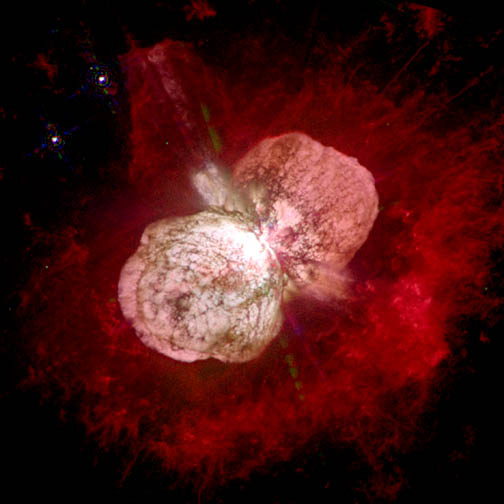A supernova is an unimaginably violent explosion that destroys a star. A star undergoes a supernova only after it enters its final phase of becoming a red giant. As a red giant, a star greatly expands and experiences relatively minor explosions (outbursts) that eject outer shell materials into space. The Hubble image above shows the results of one such outburst roughly 150 years after it began.
Eta Carinae is a star some 100-times more massive and 5-million times brighter than the Sun. It is one of the largest stars in the galaxy. In 1837 Eta Carinae went from being barely visible with the naked eye to suddenly becoming the second brightest star in the southern hemisphere. The outburst lasted until 1860, when the star began to dim. During the outburst the star released as much light as a supernova, but without completely exploding. The Hubble image above records the puzzling results of this outburst event: instead of a single roughly spherical cloud of explosion debris, the outburst produced two huge lobes of dust-rich material ejected along the north and south poles of the star and a thin ring of material poor in dust ejected along the equatorial plane. It is not understood why the ejected material followed these paths. Astronomers think that this star will not last much longer, astronomically speaking, before it finally explodes in a supernova.
Image credit: Hubble Space Telescope; The main source for HST images and explanations is HubbleSite.org.
|

